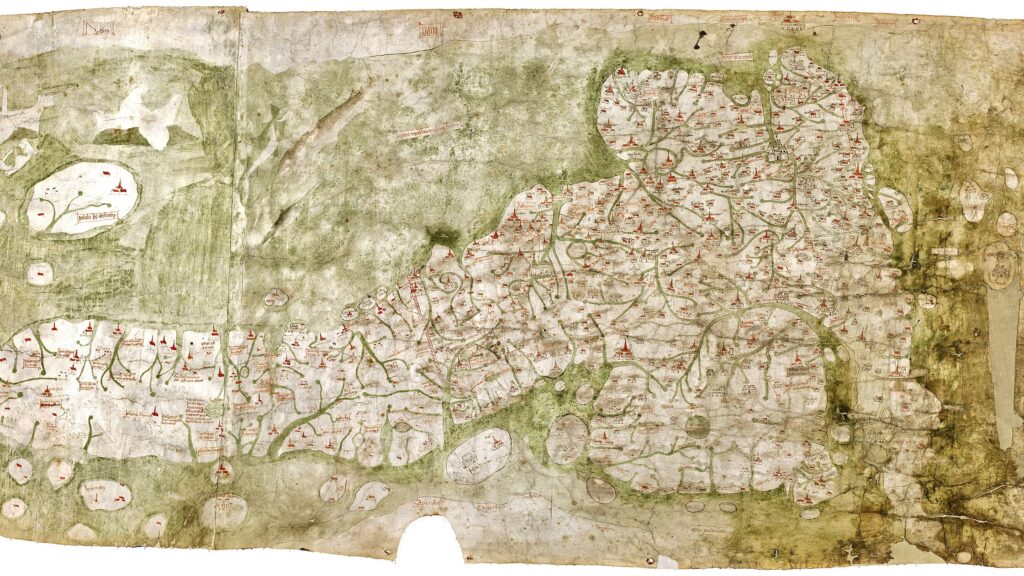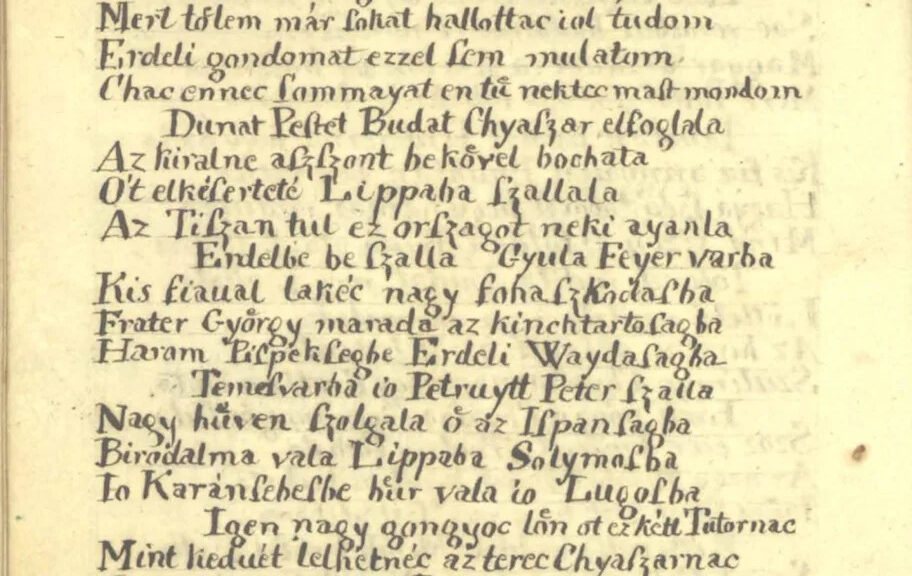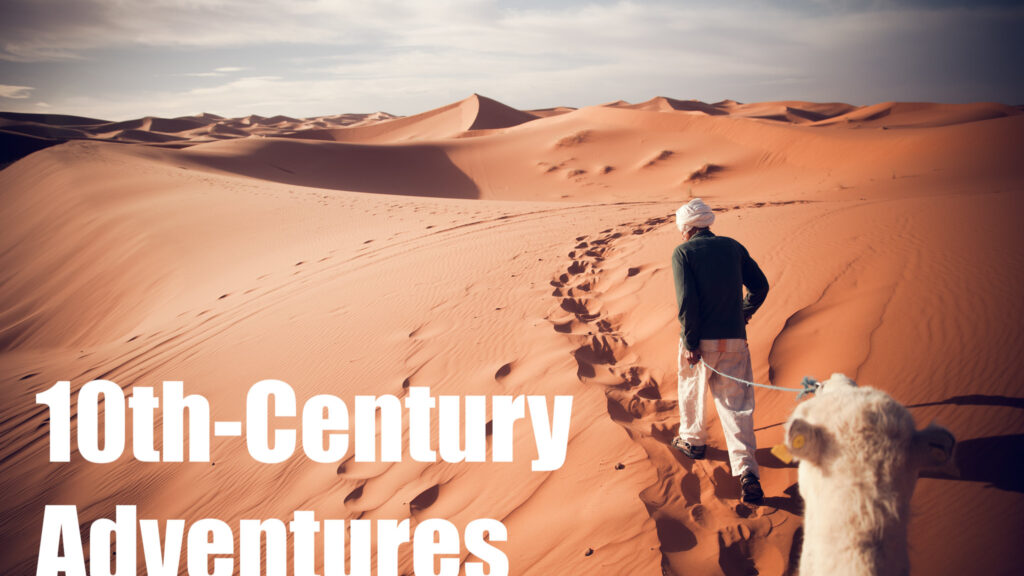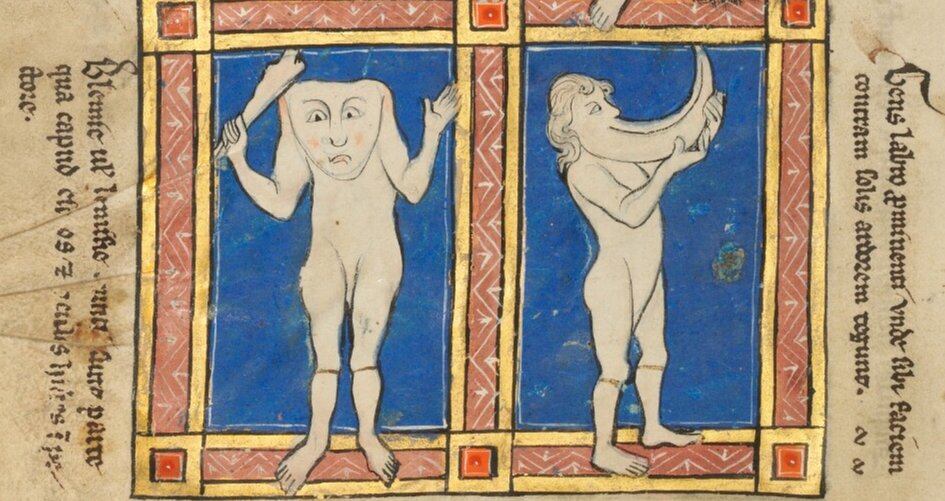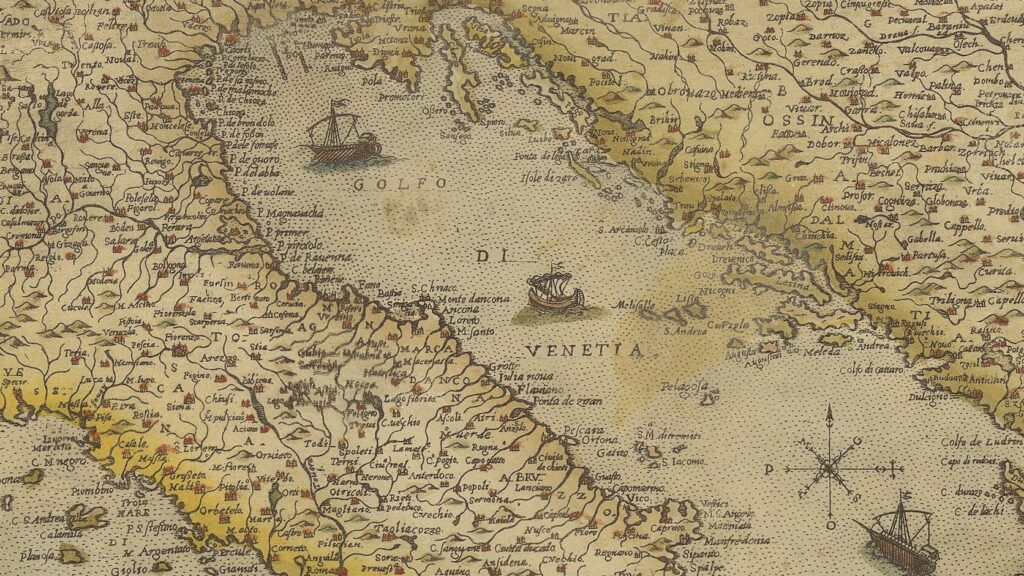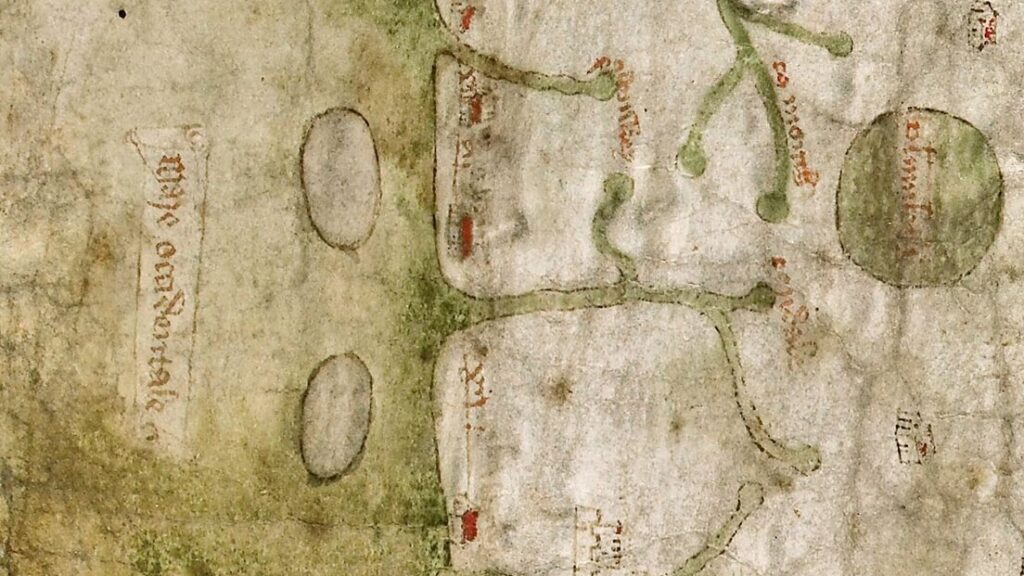Medieval England’s Road Network Mapped Using the Gough Map
A new study uses the Gough Map to reconstruct medieval England’s road network, revealing how Roman routes shaped travel for centuries.
New Medieval Books: The Roads to Rome
The Roman Empire constructed an extensive road network that spanned the Mediterranean and much of Europe. This book explores the enduring legacy of these roads, including their significance during the Middle Ages.
Climate Chronicles: Transylvania’s Delayed Response to the Little Ice Age
New research reveals that Transylvania experienced a delayed impact of the Little Ice Age, with historical records describing extreme weather events that shaped communities in unexpected ways.
New Medieval Books: This Earthly Globe
This book tells the story of Giovambattista Ramusio and how he created one of the first major works of world geography. First published in the middle of the 16th century, Ramusio’s work reveals much about how knowledge of far off lands came to Venice.
When the Atlantic Was Full of Islands: Mythical Lands West of Medieval Europe
Discover a time when the Atlantic Ocean was thought to be dotted with mysterious islands, from the elusive Hy Brazil to Saint Brendan’s legendary paradise. These mythical lands, born of medieval imagination and storytelling, inspired explorers and shaped the Norse quest for the unknown.
Adventures of a Tenth-Century Explorer: Mapping the Medieval World
What was it like to travel the world over a thousand years ago? For one man, it was a journey filled with adventure, hardship, and discovery.
New Medieval Books: The Book of Marvels: A Medieval Guide to the Globe
The Book of the Marvels of the World was created in 15th-century France and four manuscript copies survive. This book showcases many beautiful images from these manuscripts and reveals much about what medieval Europeans believed about what lies in the far corners of the world.
This map is 900 years old – how accurate is it?
Around the year 1136, a map was inscribed in China. It is considered a remarkable example of medieval geography, but how does it fare when tested against modern georeferencing?
10 Natural Disasters in the Middle Ages
Here are ten of the worst natural disasters that took place in the Middle Ages.
Monsters Traveling from Map to Book: An Unexpected Journey
In this talk I will examine three cases in which information traveled in the other direction: the authors of books used maps as their sources for monsters.
Adriatic Sea or Gulf of Venice? How Medieval Politics played out on maps
For centuries a debate was taking place among Europe’s mapmakers: should the Adriatic Sea be called the Gulf of Venice?
Strange Borders with Medieval Origins
Are you a geography fan, excited about enclaves and exclaves? Here we take a look at six strange border areas whose origins date back to the Middle Ages.
New Medieval Books: Here Begins the Dark Sea
The story of the Venetian monk Fra Mauro and the map of the world he created in 1459.
Researchers discover medieval church lost to sea in 1362
A joint scientific project has located the sunken church of Rungholt in the North Frisian Wadden Sea in Germany. It is believed that the church and the rest of Rungholt were drowned in a storm surge in 1362.
10 Medieval Places That Don’t Exist
There were some strange lands and places that medieval people thought were real.
The Myth of the Flat Earth
If they didn’t think it was flat, what did they think? And why are we all convinced otherwise?
The Madaba Map: A Further Reexamination
I claim that the Madaba map belonged to a new genre of “Holy Land” iconography that appeared in Palestine in the sixth century, iconography that related to the formation of the Holy Land’s sacred space and the interpretation of its landscape in light of the biblical text.
Gough Map may have revealed location of long lost kingdom, researchers find
Stories of a lost kingdom off the coast of Wales date back to the Middle Ages. Now, new research suggests an area where the Kingdom of Cantre’r Gwaelod would have existed, and that the famous Gough Map has helped reveal it.
Mecca’s population was only about 500 people during the Prophet Mohammed’s time, study finds
New research suggests that the population of Mecca was only a few hundred people when the Prophet Muhammad first began preaching the Islamic religion during the first decades of the seventh century.
From Slave to Traveler to Writer: The Story of Yaqut al-Hamawi
Yaqut al-Hamawi is a celebrated medieval scholar, geographer, and traveler who lived in the Abbasid caliphate during the late 12th and early 13th centuries. He is famous for the books he composed and his travels throughout the Muslim world.
The Medieval Travel Guide of Cristoforo Buondelmonti
Cristoforo Boundelmonti’s 15th-century guide to the islands and lands around the Aegean Sea is a traveller’s delight.
Climate and the Crises of the Early Fourteenth Century in Northeastern Europe
This article demonstrates how tree-ring material can be applied to historical research using the climate-driven crises of the fourteenth century as a case study.
Mental Geographies and Cultural Identities in the Baltic Region in the Eleventh-Century: the Anglo-Saxon Cotton World Map
The cartography of the Baltic Sea and Scandinavia has been an interesting topic among scholars of the history of the ancient maps.
Medieval History, Explosive Volcanism, and the Geoengineering Debate
By studying historical explosive volcanism, medieval history provides a laboratory for understanding the climatic and societal impacts of geoengineering in the form of reports of extreme weather and societal stresses such as subsistence crises and even conflict arising from scarcity induced resource competition
A life well lived in the tenth-century
‘There is nothing that befalls travelers of which I did not have my share, barring begging and grievous sin.’
